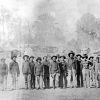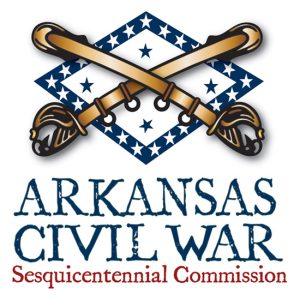calsfoundation@cals.org
Kate Hart
As part of the Union’s Mississippi River Squadron during the Civil War, the sternwheel steamer Kate Hart served as a chartered vessel on the Mississippi River and its tributaries, including expeditions on the White River during the ongoing battle for control of significant interior rivers in the Trans-Mississippi Department.
Built in 1864 in Paducah, Kentucky, the Kate Hart displaced between 279 and 300 tons of water and joined the Mississippi River Squadron in the summer of 1864, serving with two barges. Erroneous reports claimed that the Kate Hart burned in July 1864 during an operation on the White River under Brigadier General Eugene Asa Carr against Brigadier General John Sappington Marmaduke, but the vessel served until the end of the war.
In late August 1864, Brigadier General Christopher Columbus Andrews, commanding the Second Division of the Seventh Army Corps headquartered at DeValls Bluff (Prairie County), ordered an expedition up the White River to locate and pursue the commands of Brigadier General Joseph Orville Shelby and Colonel Archibald Stephenson Dobbins. The expedition embarked from DeValls Bluff on August 30 onboard the Kate Hart, escorted by Gunboat No. 30 under Captain John R. Grace, with a contingent of twenty-two officers and 515 soldiers from the Twelfth Michigan Infantry and the Fifty-fourth and Sixty-first Illinois Infantry regiments; they had orders to rendezvous with Brigadier General Joseph R. West’s cavalry division.
Low water levels caused the Kate Hart to run aground frequently, slowing the expedition’s progress. On August 31, Confederate pickets from Dobbins’s command observed the expedition from the shore near Augusta (Woodruff County) and followed its progress for the next twenty miles. Due to persistent problems with low water levels, the expedition returned to DeValls Bluff without making contact with West, though it continued soon thereafter with lighter draft vessels.
The Kate Hart also served as a transport during the White River Expedition from DeValls Bluff in mid-December 1864 and continued to serve under charter in this capacity through August 9, 1865. After the war, its owners fit the Kate Hart with a new boiler and operated the vessel as a dredge to haul sand from the Mississippi River bottom near St. Louis, Missouri. There is no record of the vessel’s final fate.
For additional information:
Christ, Mark, ed. “This Day We Marched Again”: A Union Soldier’s Account of War in Arkansas and the Trans-Mississippi. Little Rock: Butler Center Books, 2014.
The Federal Cases: Comprising Cases Argued and Determined in the Circuit and District Courts of the United States. Book 19. St. Paul, MN: West Publishing Company, 1895.
Gibson, Charles Dana, and E. Kay Gibson. Dictionary of Transports and Combatant Vessels Steam and Sail Employed by the Union Army, 1861–1868. Camden, ME: Ensign Press, 1995.
Huddleston, Duane, et al. Steamboats and Ferries on the White River: A Heritage Revisited. Conway: University of Central Arkansas Press, 1998.
The War of the Rebellion: A Compilation of the Official Records of the Union and Confederate Armies. Series 1, Vol. 34, Part 1. Washington DC: Government Printing Office, 1889.
The War of the Rebellion: A Compilation of the Official Records of the Union and Confederate Armies. Series 1, Vol. 41, Part 1. Washington DC: Government Printing Office, 1893.
The War of the Rebellion: A Compilation of the Official Records of the Union and Confederate Navies. Series 1, Vol. 26. Washington DC: Government Printing Office, 1914.
Way, Frederick. Way’s Packet Directory, 1848–1994: Passenger Steamboats of the Mississippi River System since the Advent of Photography in Mid-Continent America. Athens: Ohio University Press, 1994.
Robert Patrick Bender
Eastern New Mexico University–Roswell
 Civil War through Reconstruction, 1861 through 1874
Civil War through Reconstruction, 1861 through 1874 Military
Military Searcy, Fairview, and Augusta Expeditions
Searcy, Fairview, and Augusta Expeditions ACWSC Logo
ACWSC Logo 




Comments
No comments on this entry yet.